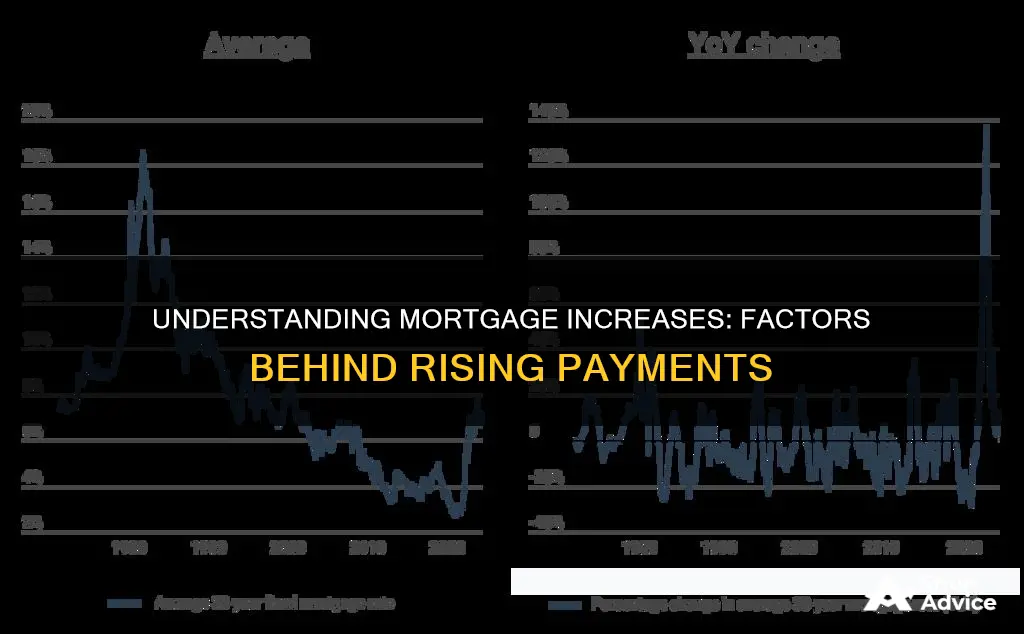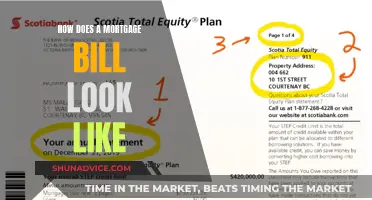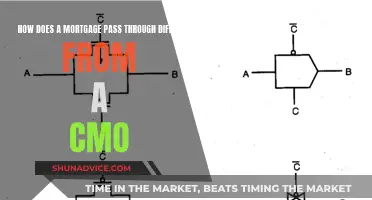
There are many reasons why a mortgage payment can increase, even with a fixed-rate mortgage. One of the most common causes of a mortgage payment increase is changes in the price of property taxes or homeowners insurance. If you have an escrow account, which allows you to divide your property tax and homeowners insurance bills into equal monthly payments, an increase in either of these expenses will result in a higher monthly mortgage payment. Additionally, if you have an interest-only or pay-option loan, your monthly payments will increase when you start paying the principal, which is the actual amount owed on the home. Mortgage payments can also go up due to adjustable-rate mortgages (ARMs), where the interest rate changes after a certain period, resulting in higher monthly payments.
| Characteristics | Values |
|---|---|
| Type of mortgage | Adjustable-rate mortgage (ARM) or fixed-rate mortgage |
| Interest rate | Variable or fixed |
| Escrow account | Required or optional |
| Property taxes | Increasing or decreasing |
| Homeowners insurance | Increasing or decreasing |
| Temporary buydown | Present or absent |
| Private mortgage insurance (PMI) | Present or absent |
| New fees | Present or absent |
What You'll Learn

Property taxes
When property taxes increase, it can lead to a rise in monthly mortgage payments. Property taxes may increase due to an increase in the property's value, which can be a result of home improvements or general market value increases in the area. Additionally, changes in government policies and recent home sales data can lead to higher tax rates and, consequently, higher property taxes.
It is recommended that homeowners be proactive in managing their property taxes. This includes staying informed about payment schedules and deadlines, which can vary by location, and claiming any eligible exemptions or deductions. Additionally, homeowners should consider the impact of property taxes on their overall financial situation and seek professional advice if needed.
Deed of Trust vs Mortgage: What's the Difference?
You may want to see also

Homeowners insurance
If you have a mortgage, your lender will likely require you to have a homeowners insurance policy to safeguard their financial investment. This is usually paid through an escrow account, where a portion of your monthly mortgage payment is set aside for your insurance premium and property tax. If your insurance rates increase, your mortgage payment can also go up.
There are several reasons why your homeowners insurance rates may increase:
- Claim history: If you have a history of making claims, insurers may consider you high-risk and charge higher rates. The size and type of claim can also affect your rate. For example, a fire claim may be viewed differently by your insurer than a break-in.
- Location: If multiple homeowners in your area have filed claims, insurance companies may consider your location high-risk, leading to increased premiums.
- Credit score: Homeowners with bad credit are often viewed as more likely to file a claim and, therefore, pay higher insurance rates.
- Age of property: If your roof or property's systems (e.g., heating, electrical, plumbing) are older, insurers may consider you more likely to file a claim and increase your premium.
- Natural disasters: If your region has experienced disasters like wildfires, tornadoes, or hurricanes, insurance companies may increase rates to cover payouts and protect against future losses.
- Market availability: In certain states or regions, a decrease in the number of insurers can lead to increased premiums for homeowners due to higher demand and exposure.
To manage costs, it is recommended to shop around for insurance providers, evaluate your level of coverage, and improve your credit score. Additionally, consider the impact of any renovations or upgrades to your property, as these may lower your premium.
Removing Your Name from a Mortgage: A Step-by-Step Guide
You may want to see also

Adjustable-rate mortgages
An adjustable-rate mortgage (ARM) is a home loan with an interest rate that can change periodically. This means that the monthly payments can go up or down. The initial interest rate on an ARM loan is typically lower than a fixed-rate mortgage. This initial rate is sometimes referred to as a "`teaser` rate." After the introductory period ends, the interest rate resets at regular intervals, and the monthly payments can fluctuate based on the market.
The interest rate on an ARM is determined by two numbers: the index and the margin. The index is an interest rate that fluctuates with general market conditions. The margin is a number set by the lender when the loan is applied for and remains unchanged after closing. When the introductory rate period expires, the index and margin are added together to form the new interest rate, subject to any rate caps.
ARMs are generally better for borrowers who plan to leave the home or refinance before the introductory period ends. During periods of higher rates, ARMs can help borrowers save money initially by securing a lower interest rate. However, interest rates are unpredictable, and borrowers risk facing higher monthly payments if the rates increase.
It is important to note that property taxes and homeowners' insurance can also impact the monthly payments of an ARM. Property taxes typically increase as the value of the home rises, leading to higher escrow payments. Additionally, changes in homeowners' insurance can also cause fluctuations in the monthly payments.
Releasing a Recorded Mortgage in New Jersey
You may want to see also

Interest rates
There are two types of interest rates associated with mortgages: fixed-rate and variable-rate. A fixed-rate mortgage (FRM) has an interest rate that remains constant throughout the term of the loan. This means that the monthly payments for principal and interest do not change. On the other hand, a variable-rate mortgage, also known as an adjustable-rate mortgage (ARM), has an interest rate that can fluctuate over time. The interest rate on an ARM is typically tied to an index, such as the prime rate or the London Interbank Offered Rate (LIBOR), which can cause the interest rate to adjust periodically.
The impact of interest rate changes on monthly mortgage payments can be significant. For example, consider a $300,000 loan with a starting interest rate of 3%. If the interest rate adjusts to 5% after a certain period, the monthly payment could increase by nearly $350. This increase in the monthly payment is due to the higher interest charges, which result from the higher interest rate.
It is important to note that even with a fixed-rate mortgage, the monthly payment can sometimes increase. This can occur due to changes in property taxes, homeowners insurance, or other factors. However, the interest rate itself remains fixed for the duration of the loan.
To manage the impact of interest rate changes, homeowners can consider refinancing their mortgage to obtain a lower interest rate or a longer loan term, which can reduce the monthly payments. Additionally, making prepayments towards the principal balance can help reduce the overall interest paid over the life of the loan.
Removing a Co-Signer from Your Mortgage: A Step-by-Step Guide
You may want to see also

Mortgage insurance
There are different types of mortgage insurance available, depending on the type of loan a borrower obtains. For example, with a conventional loan, borrowers may be able to arrange for private mortgage insurance through their lender. On the other hand, if a borrower obtains a Federal Housing Administration (FHA) loan, they will be required to pay mortgage insurance premiums to the FHA. Additionally, the US Department of Agriculture (USDA) offers a loan program similar to the FHA, but typically at a lower cost. For borrowers who are unable to make a 20% down payment, the USDA program requires an upfront loan guarantee fee of 1% and an annual mortgage insurance fee of 0.35% of the loan amount, paid monthly.
It is important to note that mortgage insurance is not permanent and can be cancelled once the borrower has accumulated enough equity in their home. For PMI, this typically occurs when the borrower reaches 20% equity, although there may be additional requirements, such as having paid PMI for a minimum of two years. In the case of FHA loans, borrowers may be able to cancel their mortgage insurance once they have reached 22% equity and have consistently made on-time payments for at least two years.
Reporting Mortgage Insurance Premiums: A Comprehensive Guide
You may want to see also







